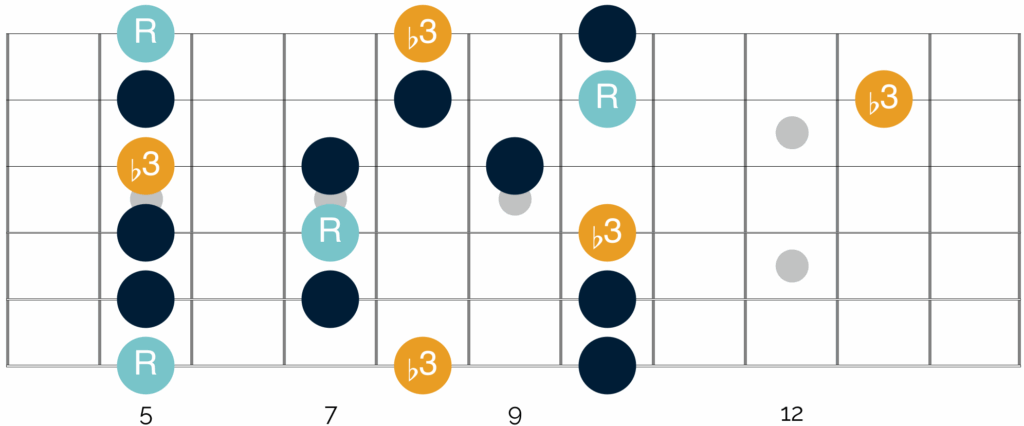Now that we’ve looked at the tonic and the 5th – the two notes of the minor pentatonic scale which create a sense of resolution – we can start to explore the remaining three notes of the minor pentatonic scale.
These notes create tension and offer exciting alternatives that will help you create more unpredictable, playful solos.
We’ll start by looking at the b3.
The flat third (♭3) is the next note after the tonic in the minor pentatonic scale.
It’s one of the most characteristically “bluesy” intervals and offers a lot of expressive potential when used correctly.
If we look at the shapes of the minor pentatonic scale where we have been focusing up to this point, you’ll find the b3 in the following positions:

This shows all of the b3 notes in the first and second shapes of the scale, with an additional note highlighted at the 13th fret of the B string.
This note technically appears in the third shape of the scale.
However I have added it in here as I think moving up to this note laterally on the B string is a really great way of adding a little bluesy spice to your playing (an idea I explore in more detail from the 3.40 minute mark in the video above).
Targeting the b3
Unlike the 5th, holding this note for any length of time can create a tense and unresolved sound (and not in a cool and bluesy way!)
As such, with this note – and with the remaining notes covered in the coming lessons – it’s important to play it more fleetingly.
With the b3, my favoured method is to bend the note slightly before cutting the bend off. In this way, you create a little burst of bluesy tension, before cutting it short.
This works very well as a way of resolving your phrases, or of pulling you through to your next lick.
As the b3 always sits above the tonic in the scale, you can either target this idea vertically – by moving from the lower strings to the higher strings, or laterally – by sticking on a single string but moving up along the same string.
Try this out in the different positions highlighted above and specifically on the treble strings of G, B and E.
Just remember to cut the note short after bending it. This will give your playing that beautiful, bluesy quality, without too much tension or dissonance entering the mix.
